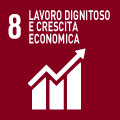- Docente: Carlotta Berti Ceroni
- Crediti formativi: 6
- SSD: SECS-P/01
- Lingua di insegnamento: Inglese
- Modalità didattica: Lezioni in presenza (totalmente o parzialmente)
- Campus: Bologna
-
Corso:
Laurea Magistrale in
Economics and Econometrics (cod. 5977)
Valido anche per Laurea Magistrale in Economics and Econometrics (cod. 5977)
-
dal 10/02/2025 al 20/03/2025
Conoscenze e abilità da conseguire
At the end of the course the student has a good understanding of basic general equilibrium dynamic macroeconomic models, used by economists to analyze several theoretical and policy questions, and of modern growth theory. In particular, he/she: - knows and is able to solve analytically macroeconomic dynamic models (infinite horizons and overlapping generations); - knows the main empirical issues and theoretical models analyzed by modern growth theory; - is able to apply models to investigate comparative dynamics across countries and over time.
Contenuti
The course presents topics in modern macroeconomic theory with a focus on long run issues. The first part of the course introduces the two basic macroeconomic models used to describe the economic system in a dynamic general equilibrium framework with optimizing agents. The second part of the course provides a systematic presentation of modern macroeconomic growth theory and analyzes the role of different factors in generating persistent disparities in income per capita across countries.
Topics:
- Stylized facts on economic growth and the neoclassical growth model. Dynamic macroeconomic models with optimizing agents. The representative agent model with infinite horizons. The overlapping generations model. The neoclassical growth model: theory and empirical evidence.
- Endogenous growth: competitive models of endogenous growth. Endogenous technical change
- Poverty traps. Multiple equilibria. Multiple steady states.
Testi/Bibliografia
Suggested textbooks:
- David Romer, Advanced Macroeconomics, Mc Graw-Hill, 2019 (5th edition)
- Barro R. and X. Sala-i-Martin, Economic Growth, MIT Press, 2004 (2nd edition)
- Acemoglu, D. Introduction to Modern Economic Growth, Princeton University Press, 2008
The complete reading list (required and suggested readings from the textbooks and other sources such as journal articles, books, etc.) will be made available on Virtuale.
Metodi didattici
Lectures (with slides). Home assignments. Review classes.
Modalità di verifica e valutazione dell'apprendimento
The final exam aims at verifying the acquisition of expected learning outcomes. The exam is written with essay-type, true and false, analytical-type questions (three questions: the exam will not necessarily include a question per type; more than one question per type may be included). Questions and problems aim at verifying knowledge of the main macroeconomic dynamic models, of the empirical issues and of theoretical models analyzed by modern growth theory, and the ability to apply these models to understand and investigate comparative dynamics across countries and over time.
Individual solutions to assignments, handed out during lectures, may contribute to assessment, provided that all assignments and take-home exam are returned in due time and the exam is taken at the end of the course (April). Otherwise the exam grade is based entirely on a closed-book written exam.
Requirements on assignments and take home exam and exam grading rules will be communicated in class and published on Virtuale in the course's syllabus at the beginning of the course.
The maximum possible score is 30 cum laude, in case all anwers are correct, complete and formally rigorous.
The grade is graduated as follows:
<18 failed
18-23 sufficient
24-27 good
28-30 very good
30 e lode excellent
For students who take Growth Theory as part of the integrated course Macroeconomics A, the grade obtained in Growth Theory will contribute to the final grade of the integrated course. This is obtained as the average of the grades of Macroeconomics and Growth Theory. A passing grade (18+) is required in both modules composing the integrated course to pass the integrated course exam.
Strumenti a supporto della didattica
Lecture slides. Solutions of home assignments.
Teaching materials are made available on Virtuale
Orario di ricevimento
Consulta il sito web di Carlotta Berti Ceroni
SDGs

L'insegnamento contribuisce al perseguimento degli Obiettivi di Sviluppo Sostenibile dell'Agenda 2030 dell'ONU.
